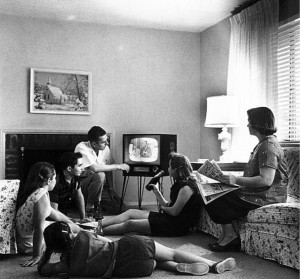A new report from the Nielson company:
According to Nielsen’s forthcoming Advertising & Audiences Report, the average U.S. TV home now receives 189 TV channels—a record high and significant jump since 2008, when the average home received 129 channels. Despite this increase, however, consumers have consistently tuned in to an average of just 17 channels.
This data is significant in that it substantiates the notion that more content does not necessarily equate to more channel consumption. And that means quality is imperative—for both content creators and advertisers. So the best way to reach consumers in a world with myriad options is to be the best option.
I don’t think we should find the first claim surprising. Online sales have greatly increased the amount of music and books available to consumers, but I would not expect that as a result individuals have, as a result, become more omnivorous in their purchases across genres. And television channels are, essentially, like genres – news, sports, children’s programming, drama, etc. A greater number of channels exclusively devoted to sports will not have any impact on people who are just not that interested in sports.
The second claim seems rather obvious: with lots of competition all available for free at the click of the remote, you had best have high quality to attract viewers.
A third issue (and the subject of my very first post for this blog), likely to arise as a result of this study, is “if it remains the case that most households only watch a handful of channels, why are they paying for, on average, 189 channels?” Does this result bolster the case for “a la carte” channel licenses? I don’t think so. Cable or satellite providers can offer extra channels to customers at virtually zero marginal cost once the connection and contract for service have been made. A standard result of two-part pricing is that it is best to sell individual channels at marginal cost (i.e. zero) while charging an “entry” fee based on consumer demand given the available bundle of channels. Thus, I pay for all of the New Yorker‘s content with my subscription even though I only read a portion of the articles, I pay for entry to the whole museum for a day regardless of how many rooms I actually view, and I pay for a television service regardless of how many of the channels I actually watch. Still, expect the report to raise questions,again, about pricing practices …


[…] We switched ’round and ’round ’til half-past dawn AJBlog: For What it’s Worth | Published 2014-05-06 Is the Novel Dead? AJBlog: CultureCrash | Published 2014-05-06 “Spring Masters” Show Hires Architect To Radically Redesign AJBlog: Real Clear Arts | Published 2014-05-07 The Devil in the Details: More on Sotheby’s-Third Point Agreement AJBlog: CultureGrrl | Published 2014-05-06 Celebrating Ornette! from Philly, in photos AJBlog: Jazz Beyond Jazz | Published 2014-05-06 […]